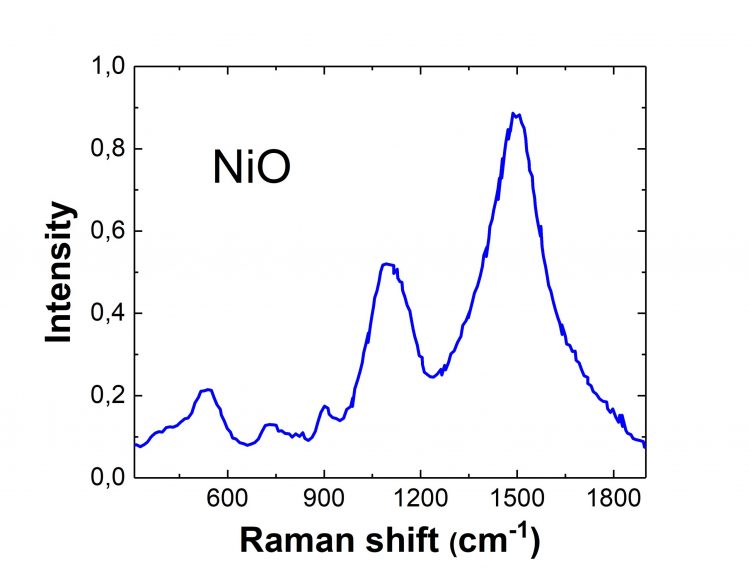Nickel Oxide Raman Spectrum
Pure nickel oxide (NiO) is a type-II, easy-plane antiferromagnet (S=1) with the Néel temperature TN= 523 K, whereas in the paramagnetic state, it has a rock-salt-type structure. The transition to the antiferromagnetic state is accompanied by a weak rhombohedral distortion. Nickel oxide is an intermediate product in the manufacture of nickel (II) salts, nickel-containing catalysts, and ferrites. Because of its peculiar properties, it is also of great interest to science.
Contact us to get access to Raman Spectra Database more than 20 000 chemical and biological substances
Raman spectroscopy of NiO
Magnon excitations in pure nickel oxide have been successfully studied by Raman spectroscopy. It was found that the strong magnetic Raman response is caused by a Ni-O superexchange mechanism. The temperature- and pressure-dependent NiO Raman scattering makes it possible to identify contributions from one- and two-phonon excitations, as well as from one-, two-, and four-magnon excitations, where the magnon contribution to the Raman spectra increases with decreasing temperature or rising pressure. Thus, the sensitivity of the Raman scattering spectra to magnon excitations has been used to probe the magnetic domain structure.
Raman Spectra Library
Raman spectroscopy can uniquely identify many chemical and biological agents.
All substances


